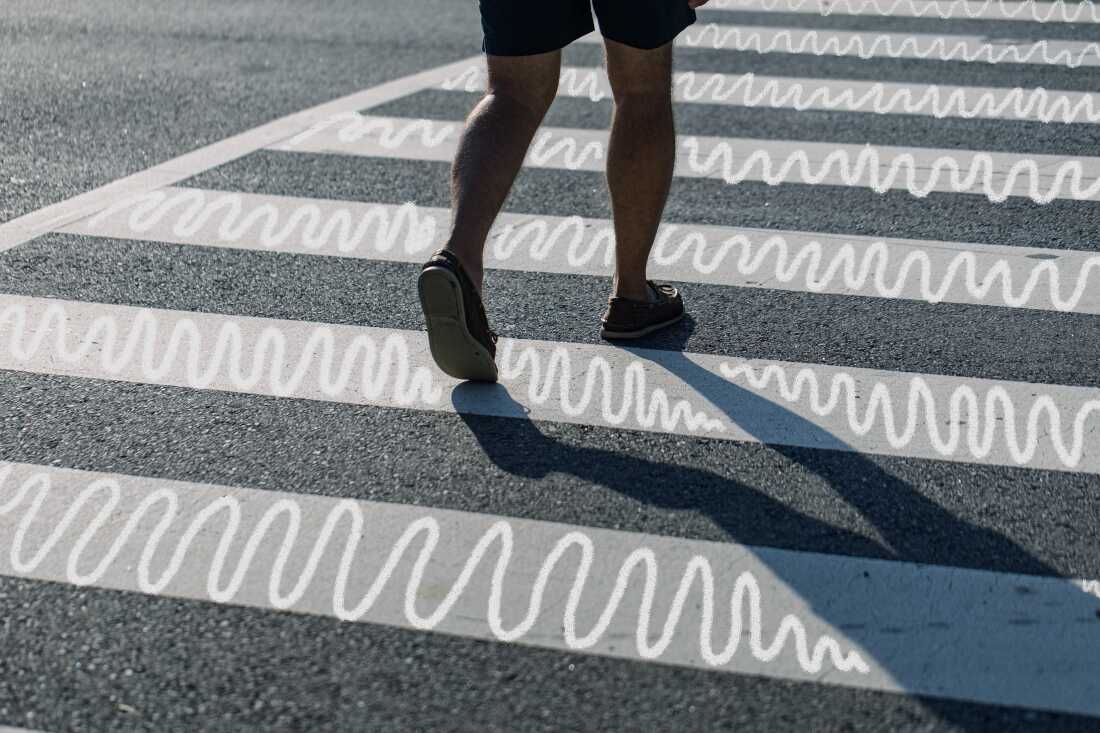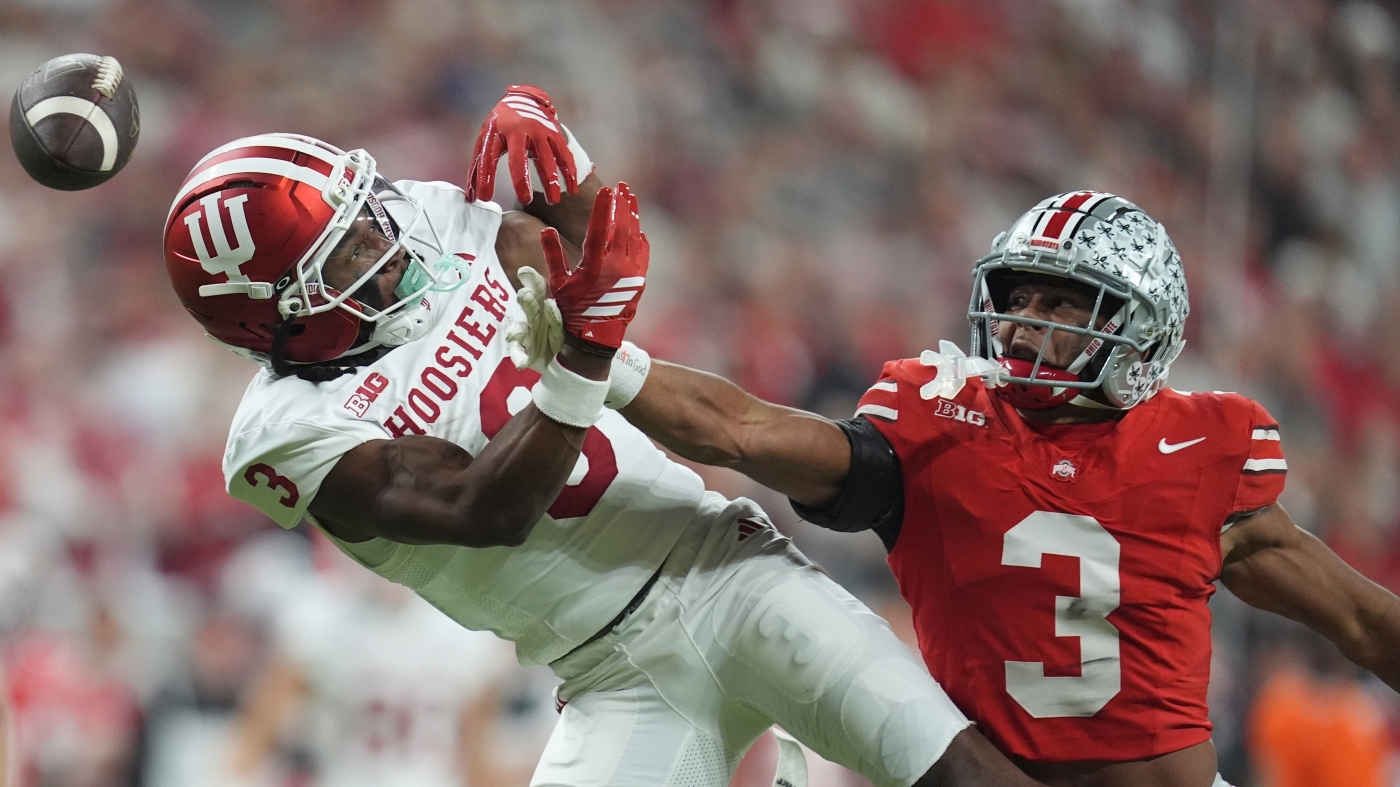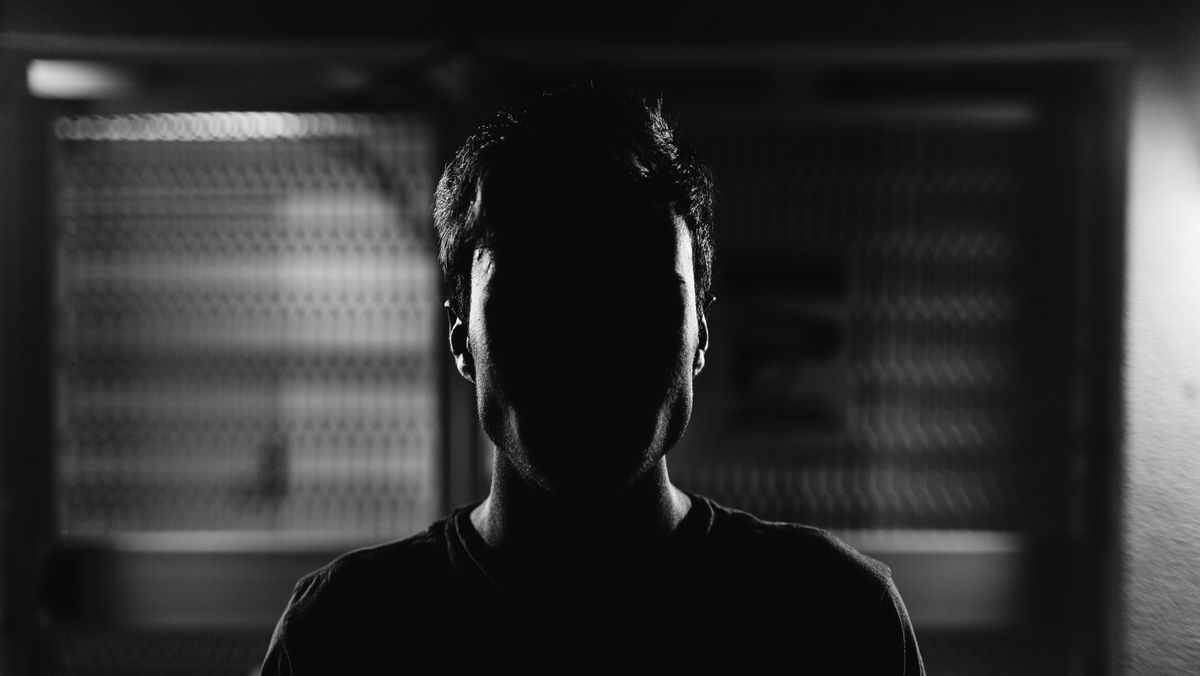
The basics of road safety might seem obvious, but they can save your life. DON'T cross the street where drivers might not expect you. DO use sidewalks, bike paths and safe pedestrian crossings. DO make yourself visible with bike lights. DO look up from your phone when walking.
Photo Illustration by Beck Harlan/NPR
hide caption
toggle caption
Photo Illustration by Beck Harlan/NPR
You've heard of defensive driving — driving practices to help you stay safe on the road, like reducing your speed in bad weather or signaling before switching lanes. But what about defensive walking and cycling?
They're a crucial part of pedestrian and cyclist safety, and more people should practice them, says Ryan Sharp, a transportation consultant with Alta, a transportation design firm.
"It means paying attention to your surroundings and having a constant awareness of the environment so you can anticipate potential hazards," he says. Because if you're a biker or a pedestrian and you get hit by a car, you're likely to be the more injured one.
According to estimates from the National Highway Traffic Safety Administration, about 7,100 pedestrians were killed in traffic crashes in the U.S. in 2024. In recent years, more than 1,000 cyclists have been hit and killed annually.
But casualties are preventable. Sharp and Julia Kite-Laidlaw, a pedestrian and cyclist safety advocate with the National Safety Council, share their top do's and don'ts for walkers and bikers.

When crossing the street, don't just look left and right, look in all directions — including behind you. Photo illustration by Beck Harlan/NPR hide caption
toggle caption
Photo illustration by Beck Harlan/NPR
1. DO look left, right and behind you. "Oftentimes the greatest hazards if you're a pedestrian trying to cross at an intersection are actually coming from behind you," Sharp says.
So, look in all directions and turn around before walking or biking across a road. A driver trying to turn into the intersection may not see you in the crosswalk, for example, because they're looking at oncoming traffic.

If you're biking at night, use white bike lights at the front and red lights at the back of your bike — just like on a vehicle — so cars can see you. Photo illustration by Beck Harlan/NPR hide caption
toggle caption
Photo illustration by Beck Harlan/NPR
2. DO be visible and predictable. "Never assume that a driver sees you," Kite-Laidlaw says. More than three-quarters of pedestrian deaths happen after dark, and many people get struck and killed in places without sidewalks, where drivers may not expect people to be walking, according to a 2025 report from the Governors Highway Safety Association.
Always walk on the sidewalk or a walking path. If there is none, walk on the shoulder of the street against traffic so you can see oncoming cars and drivers can see you.
If you're biking at night, put white lights at the front and red lights at the back of your bike so cars can see you. Even when you have the right of way, try to make eye contact with an oncoming driver or look for other indications that they see you, such as slowing down.

Whenever possible, stay in areas designed to keep bikers and walkers safe. Photo illustration by Beck Harlan/NPR hide caption
toggle caption
Photo illustration by Beck Harlan/NPR
3. DO use sidewalks, bike paths and safe pedestrian crossings whenever possible. Most pedestrian and cyclist deaths "happen in between intersections," Kite-Laidlaw says, for instance, when dodging traffic across the middle of a street with no crosswalks. So stay in areas designed to keep bikers and walkers safe.
In some cities, the walk and bike signals turn green before the stoplights do. That gives pedestrians and bikers a few extra seconds of lead time, boosting their visibility and showing drivers they have the right of way. Design elements like curb extensions, which shorten the length of a crosswalk, lessen the amount of time a pedestrian is exposed on the road.

To avoid injury, pay attention to your surroundings when biking and walking. Don't look down at your phone. Avoid wearing headphones. Photo illustration by Beck Harlan/NPR hide caption
toggle caption
Photo illustration by Beck Harlan/NPR
4. DON'T be distracted while biking or walking, especially while crossing the road. No listening to music or podcasts in your headphones or looking at your phone. You want to be able to hear the sounds of oncoming traffic and see what's happening around you.
5. DON'T ignore people on e-scooters and e-bikes. Because they're motorized and typically faster than someone on a bicycle, they may be a potential hazard for pedestrians and cyclists, Sharp says. Many cities and communities have yet to create the road infrastructure to accommodate these vehicles, so you may have to share space with them on sidewalks, bike paths and roads.
If you feel nervous about crashing into an e-bike rider while walking down the road, "that's understandable," Sharp says. But keep in mind that "data has shown that there are not a lot of collisions between e-bike riders and pedestrians."

Your helmet should hit about one-or two finger-widths above your eyebrow. The side strap should form a V shape under and slightly in front of your ears on both sides of your face. Photo illustration by Beck Harlan/NPR hide caption
toggle caption
Photo illustration by Beck Harlan/NPR
6. DO wear your helmet correctly when cycling. It can protect you from head injuries in case of an accident. Make sure the helmet is covering your forehead, about one or two finger-widths above your eyebrow. The side-strap should form a V shape under and slightly in front of your ears on both sides of your face. Buckle and tighten your chin strap until it's snug. When your helmet is on, it shouldn't be rocking more than one inch side to side or front to back on your head.
7. DO use turn signals when cycling to stay in constant communication with other cars, cyclists and pedestrians on the road. The easiest rules to remember are: left arm straight out for a left turn and right arm straight out for a right turn. You can also raise your left arm up in an L shape to show that you're turning right.
8. DON'T put yourself in danger just because you have the right of way. While drivers are responsible for driving safely, road safety is everyone's responsibility. "We have decades of data to show that expecting people to always act the right way [on the road] does not work," Sharp says.
By taking ownership of your safety, you are helping to create a safe system, which protects everyone on the road.
This story was edited by Meghan Keane. The visual editor is Beck Harlan. We'd love to hear from you. Leave us a voicemail at 202-216-9823, or email us at [email protected].
Listen to Life Kit on Apple Podcasts and Spotify, and sign up for our newsletter. Follow us on Instagram: @nprlifekit.

 2 months ago
35
2 months ago
35

















































